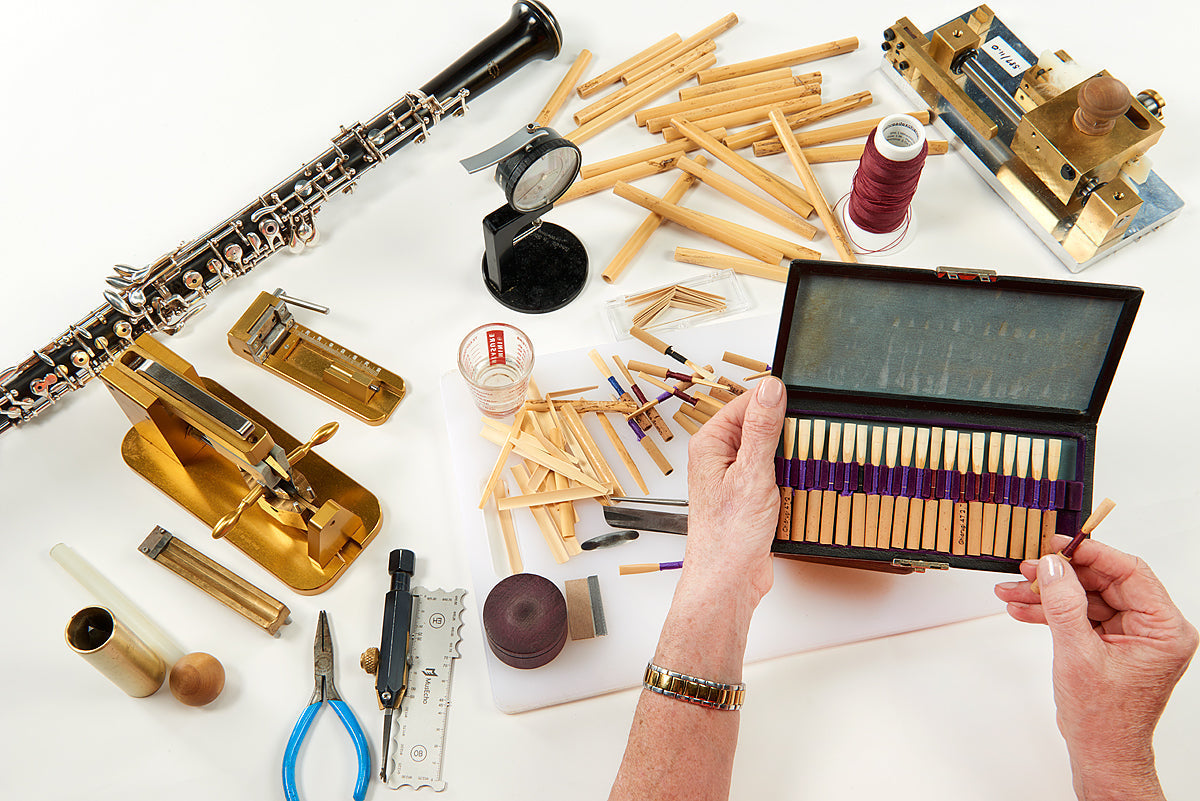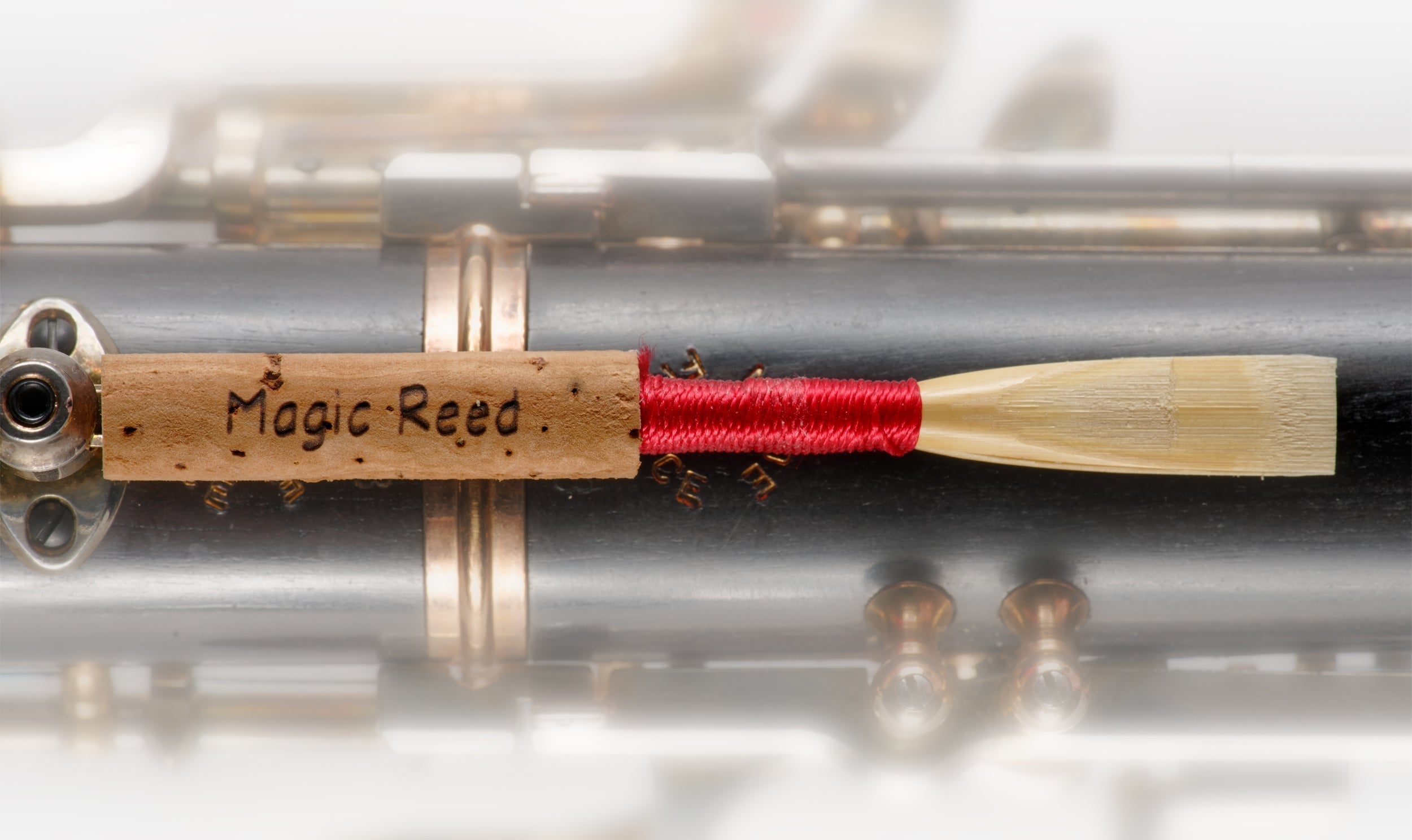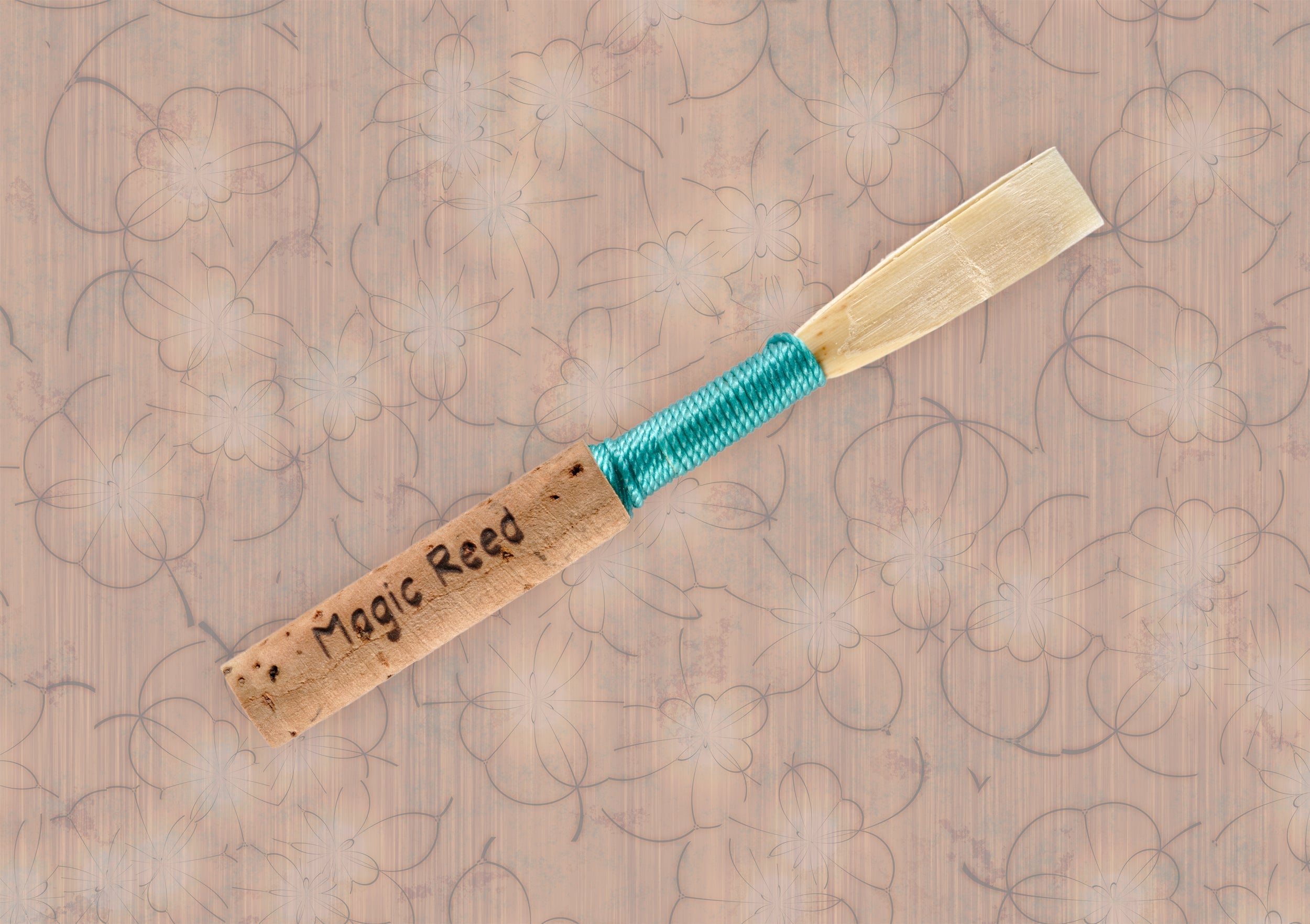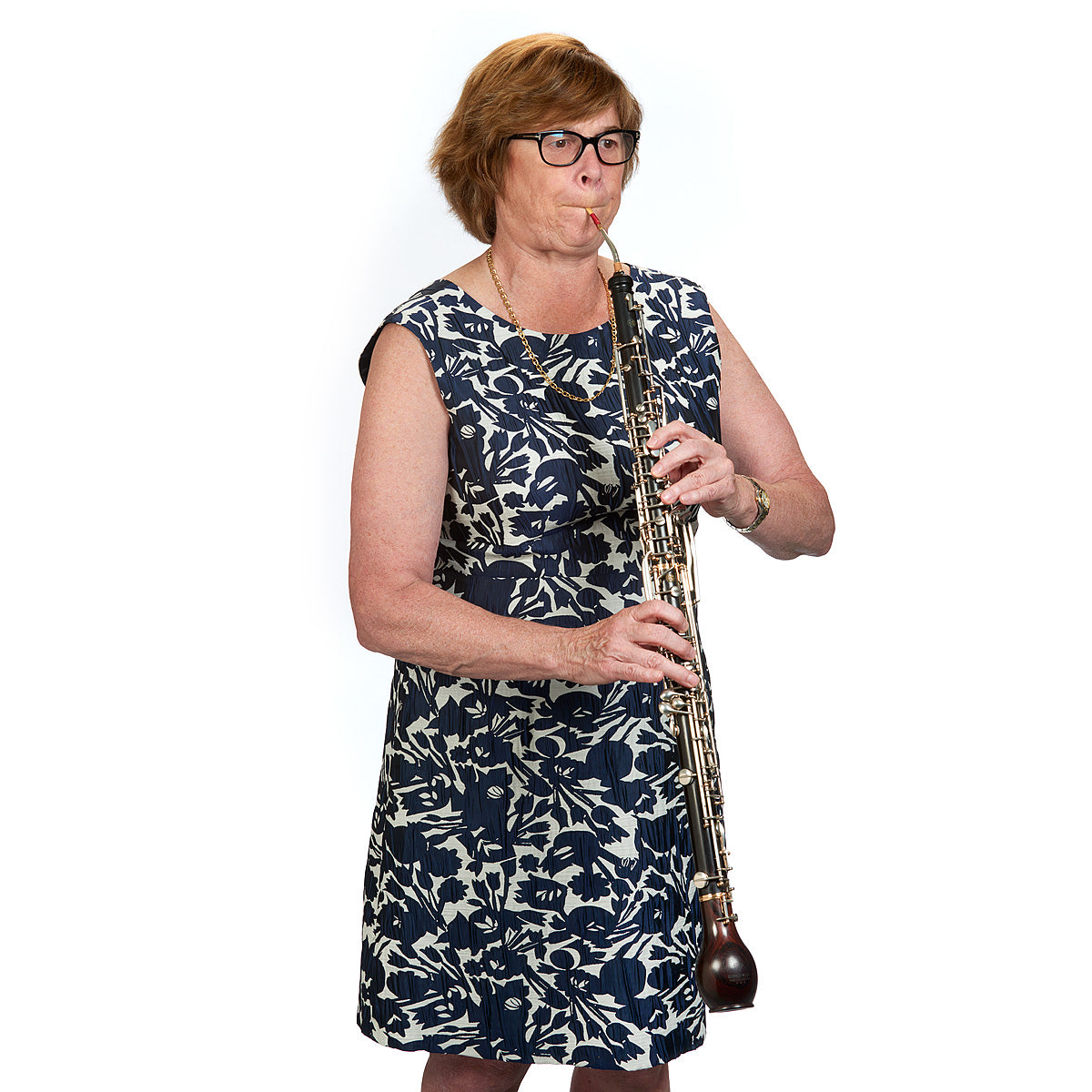
Learn About Oboe Reed Embouchure
-

-
 by Kathy Sheinhouse
by Kathy Sheinhouse
Learn About Oboe Reed Embouchure
What Is Oboe Reed Embouchure?
The definition of embouchure is "the way in which a player applies the mouth to the mouthpiece of a brass or wind instrument". For the oboist, the mouthpiece is a reed- a double reed at that. FYI, the archaic definition is "the mouth of a river or valley". I enjoyed learning that! Most of this post will be excerpts from David Ledet's book on oboe reed styles with commentary on his thoughts.
Every oboist wraps their mouth around their reed in particular ways "to cover, to varying degrees, the vibrating surface of the cane." The amount (and kind) of coverage of this surface affects tone quality.
There are many reasons a player might cover a reed extensively or lightly. As an example, players with great wind capacity might cover to restrain volume. Others may cover to darken the sound, since it dampens the vibration. Still others might have to cover because the oboe reed does not permit less or because the music requires it at pianissimo levels. On the other side, players, especially beginners do not cover because they do not have the muscles to do it, or their reeds are tissue thin and would not speak at all if they were covered. Some players prefer the brighter sound that the greater vibration of the reed surface with a more free-blowing embouchure. It is not that they do not use their muscles, it is that the apply them to places on the reed that do not dampen the vibration so much. Whatever your preference, the oboe reed that is played on needs to be compatible with that preference for optimum musical expression.
Ledet's Key Points On Placing The Embouchure
- THE MUSCLES USED FOR EMBOUCHURE ARE NOT ON THE LIPS, BUT SURROUND THEM, AND COME FROM SUPPORTING MUSCLES OF THE FACE.
- THIS MUSCLE IS SURROUNDED BY A MEMBRANE THAT FORMS A PAD ALL AROUND THE REED WHEN THE MOUTH ASSUMES A WHISTLING POSITION.
- THE LIPS TURN INWARD EQUALLY OVER THE TEETH, AND THE CORNERS OF THE MOUTH SHOULD BE DRAWN SLIGHTLY INWARD TO FACILITATE THIS PADDING (BUNCHING) OF THE LIPS.
- THE TEETH AND JAWS ARE NOT USED TO PUT ANY PRESSURE ON THE REED.
- THE MUSCLES CONTROL THE REED AND CAN DO IT BEST IF NOT INHIBIED BY BITING.
- WHEN THE MOUTH IS OPENED TO ACCOMMODATE THE LIPS, THE LOWER JAW SHOULD SWING COMFORTABLY DOWNWARD AND BACKWARD.
- THE SMILE TYPE OF EMBOUCHURE RESULTS IN LESS PAD FOR THE REED, A BRIGHTER SOUND, LESS CONTROL AND MORE BITING.
- PLAYING WITH TOO MUCH REED IN THE MOUTH CAUSES LESS CONTROL, SIMPLY BECAUSE THE TIS IS UNCOVERED AND VIBRATING FREELY IN THE MOUTH WITH NO LIP TO COVER AND TEMPER THEM.
- A ROUND EMBOUCHURE WITH EQUAL PRESSURE ON THE REEDS ALLOWS MORE FREEDOM OF MOVEMENT (FLEXIBILITY) TO TAKE THE REED INTO THE MOUTH TO PLAY IN THE UPPER REGISTER, OR A LITTLE LESS FOR THE LOWER REGISTER.
Ledet's Key Points On The Function Of The Embouchure
- EMBOUCHURE FOCUSES AIR INTO THE REED AND KEEPS IT FROM LEAKING
- EMBOUCHURE CAN TIGHTEN AND CLOSE, OR RELAX AND OPEN THE REED AS NEEDED TO ACHIEVE MUSICAL GOALS
- EMBOUCHURE CAN COVER MORE OR LESS OF THE REED
- EMBOUCHURE CAN DRAW IN OR LET OUT THE REED, WHICH CHANGES THE SIZE OF THE OPENING (THE PITCH IS RAISED WITH A REED THAT IS CLOSED AND LOWERED WHEN THE REED IS OPEN).
About The Adaptability of Embouchure
- LEDET STATES THAT THE AMOUNT OF ADJUSTMENT THAT THE EMBOUCHURE CAN MAKE IS LIMITED. THE EMBOUCHURE CANNOT CHANGE THE BASIC RESISTANCE AND ACOUSTICAL PROPERTIES OF THE REED (WHICH IS WHY THE OBOE REED IS THE MOST IMPORTANT THING IN YOUR SET-UP, ASSUMING AN OBOE THAT IS FUNCTIONING, THOUGH NOT NECESSARILY PERFECT.
Summary
I found this chapter of Ledet's book fascinating, and a great summary of embouchure. His writing is more comprehensive, dense and difficult than this summary. If you want to get more into the weeds, I suggest you get a copy of his book.













